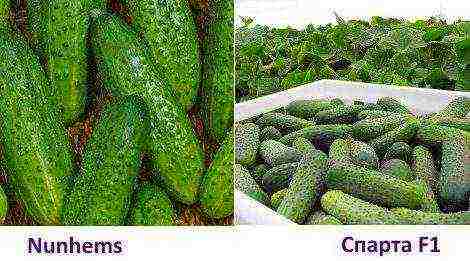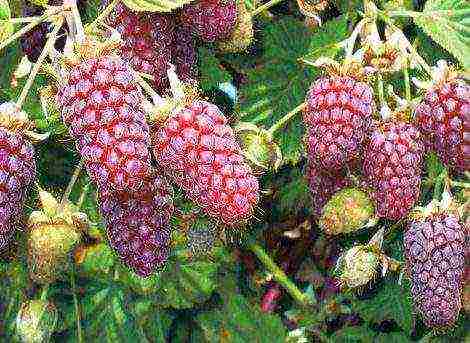Content
- 1 What varieties of eggplants to choose for the Moscow region?
- 2 Popular varieties for the Moscow region
- 3 The difference between growing eggplants in the Moscow region from other regions
- 4 How to grow eggplant seedlings for the Moscow region
- 5 Growing eggplant in a greenhouse and open field
- 6 When to Harvest?
- 7 Answers to frequently asked questions
- 8 Errors of inexperienced gardeners
- 9 Growing methods
- 10 Video "The best varieties of eggplant"
- 11 Variety selection
- 12 Video "Growing eggplant"
- 13 Agate F1
- 14 Alenka
- 15 Albatross
- 16 Bagheera F1
- 17 Don Quixote
- 18 Giselle F
- 19 Robin the Hood
- 20 Romantic
- 21 Sancho Panza
Even in the climatic conditions of the Moscow region, you can grow a good harvest of eggplant, despite the fact that the culture is thermophilic. In the article we will tell you about the best varieties of eggplant for the Moscow region, we will give advice on the timing of planting and harvesting.
What types of eggplant to choose for the Moscow region?
Due to the fact that the Moscow region is characterized by cold and damp weather, early and mid-season varieties are chosen to harvest before the onset of cold weather. Eggplants react negatively to a decrease in temperatures, their development stops and fruits cease to set.
When choosing a variety, they adhere to the mandatory conditions:
- early maturity;
- cold resistance;
- yield.
The fruits of the Helios variety ripen in 100 days, and the plant itself grows above 1 m.
- Cold-tolerant varieties are resistant to pests and diseases. When choosing seeds for uncovered beds, be sure to buy only frost-resistant varieties.
- Early and mid-season varieties are more suitable for greenhouse conditions. For open areas, early ripening varieties are chosen. Fruits of an early ripening period are ready to harvest in 90-120 days, and mid-ripening varieties ripen in 120-140 days. Moreover, the length of the shoots can range from 40 cm to 1.5 m.
- Among the superearly, dwarf early 921 is distinguished, which ripens in 90-110 days. Early ripening 148 - ripens in 110-130 days and belongs to the early varieties. The King of the North is the earliest hybrid variety.
The yield depends on the correct choice of the variety. It is the hybrid varieties that give a good harvest. We offer a list of early and mid-season varieties for the Moscow region in the table:
| Early varieties | Mid-season varieties |
| Giselle, Agate, Violet Miracle, King of the North, King of the Market | Hippopotamus, Diamond, Black handsome, Baikal |
The most productive include:
- Epic - from 1 sq. M. up to 8 kg;
- Diamond - from 1 sq. M. from 4 to 6 kg;
- Giselle - from 1 sq. M. up to 9 kg;
- Nutcracker - from 3 to 5 kg, sometimes over 6 kg.
When grown in heated greenhouses, the Baikal hybrid yields up to 18 kg per 1 sq. M.Bush shaping is important getting a good harvest. Before removing the first forkhut leaves and side shoots.Read also the article: → “How to form eggplants in a greenhouse? The main stages and schemes of the formation of the bush. "
Popular varieties for the Moscow region
Consider the best varieties, as well as their advantages and disadvantages:
- Baikal. A high-yielding hybrid variety that ripens in 100-110 days. In greenhouse conditions, the yield increases. This variety is vigorous, reaching 1.2 m in height.

Eggplant "Baikal" is a hybrid, mid-season ripening variety
- Giselle. This is a hybrid variety. From 1 sq. M. yield up to 9 kg, and in greenhouse conditions - up to 16 kg. Fruits ripen in 110-117 days, eggplants have a good presentation and taste characteristics. The fruits are stored for a long time and do not deteriorate. The variety is suitable for greenhouses and open ground. The disadvantages include exacting care. When growing this variety, all agrotechnical techniques must be strictly observed.
- King of the North. The variety is ideal for the Moscow region, because it is not susceptible to cold.The fruits are harvested in the middle of summer. Productivity 12-15 kg from 1 sq. M.
- Marzipan. A mid-season variety that is resistant to most diseases and pests. The fruits ripen before the onset of frost.
- Agate. This variety is for unheated greenhouses or open areas. The fruits ripen on the 110th day after sprouting. The advantages include high yield, disadvantages - difficulties in growing and exacting care, as well as low frost resistance.
- Popular varieties include Tender, Sadko and Baron. These are mid-season hybrids.
The difference between growing eggplants in the Moscow region from other regions
When growing eggplant, it is worth considering that the culture is thermophilic, it prefers well-lit areas, fertile soils and abundant watering. The culture does not tolerate rainy weather and cold, so it is important to know the planting dates and the basic principles of caring for eggplants in this region. Consider the features of growing eggplant in different regions of Russia.
| Indicators | Moscow suburbs | Siberia and the Urals |
| Growing method | seedling | seedling |
| Seed sowing time | March | April |
| Planting time in the beds | from May 25 to June 10 | June |
| Growing seedlings | in pots on the windowsill | in the greenhouse |
| Varieties | early and mid-early: Maria, Galina, Black Prince and Diamond | very early, such as King of the North, Diamond, Epic |
At temperatures below 25 degrees, the plant dies.
For eggplant in the Moscow region, it is necessary to form a stem. Two shoots are left, they are tied to trellises. They get rid of extra stepsons. When grown in southern regions where it is warm, eggplant cultivation consists of the following points:
- Before planting seedlings, the land is fertilized with manure, peat and sawdust. Clay soils are diluted with sand with the addition of humus and sawdust.
- Seeds are planted at a distance of 60x60 cm. Two seeds are placed in each hole.
- Water the seedlings as needed, regularly feed the plants and loosen the soil.
In contrast to the northern regions in the South, seeds are sown directly on the beds, without the use of greenhouses. In medium-sized regions, as in the Moscow region, seedlings can be transplanted into greenhouses. And transplant on the beds after the threat of frost has passed.Seedlings do not tolerate transplanting and picking well. It is necessary to adhere to the growing time for the plant to be strong.
Since eggplants love fertile soils, be sure to use top dressing, such as:
- superphosphate;
- potassium chloride;
- ammonium nitrate;
- potassium sulfate.
Tip # 1. You can use these fertilizers separately or use complex fertilizers, such as Kemira-Lux or Kristalon.
Complex fertilizers contain the necessary dosage of nitrogen, phosphorus and potassium, as well as other means for feeding, ensure the normal development and fruiting of the crop. During flowering, foliar dressings are used, for example, boric acid solution. Read also the article: → "Fertilization of eggplants: when planting, during flowering, stages of fertilization, timing of fertilization, sequence, analysis."
How to grow eggplant seedlings for the Moscow region
When planting seedlings, they adhere to the following terms:
- sowing seeds - mid-February - early March;
- transfer to a greenhouse - mid-May;
- landing in open ground - May - early June.
Seedlings appear a week after planting seeds in the ground.
For sowing seeds, peat pots are prepared, the room temperature is maintained at 25 º С. If you grow eggplants for seedlings in pots on a windowsill, additional lighting is applied 10 days after the seeds have descended. Daylight hours should be at least 14 hours.
After the emergence of seedlings, the temperature regime is controlled so that the seedlings do not stretch. A week after seed germination, the temperature is kept at 12-16 º C. Then, at night, they maintain 18-20 º C, and in the daytime, 21-23 º C. Seedlings are watered every three days.
Growing eggplant in a greenhouse and open field
While eggplants love warmth, they are not greenhouse plants. Culture develops better in open spaces, where a light breeze blows. When grown in the suburbs, it is not necessary to build a greenhouse. They get by with covering with a film. The main thing is to choose a sunny area, protected from the wind.
Plants are planted in open ground when 5 true leaves are formed. To protect against temperature extremes and heavy rains, the seedlings are covered with a film after planting in the ground. When growing eggplant in a greenhouse, be sure to prepare the soil. The beds are dug up in the fall, leveled and watered, and then manure, compost, peat, wood ash and sawdust are added.
Tip # 2. Plant eggplants near the raspberry or currant bushes that protect it to protect against the cold, strong wind.
Seedlings are planted in the evening or in cloudy weather.
Features of growing in a greenhouse and open field are given in the table:
| Parameters | Greenhouse | Open ground |
| Temperature | daytime - 24 ⁰С, night - 15 ⁰С | not lower than 24-25 ⁰С |
| Watering | 2 times per week | 2 times per week |
| Mulching | sawdust | sawdust, foil, grass cuttings |
| Varieties | Diamond, Precocious 148, Baikal, Baron, Alenka | Handsome black man, King of the market, Taste of mushrooms, Giselle, Agate |
Only for greenhouses are the following varieties suitable:
- Dolphin, Airship, Bard, Goliath, Don Quixote and Gorodovoy. These hybrid varieties die when the temperature changes, but grow well in unheated greenhouses.
- The Bagheera variety is suitable only for greenhouse conditions, because it is in the greenhouse that high yields are obtained. The fruits ripen in 110 days. The bush reaches a height of 1.2 m, and the yield is up to 3 kg. The fruits have a good presentation, without bitterness.
- The Alenka variety has light green eggplants, which is not typical for blue ones. But the color does not affect the taste in any way. The fruits ripen in 108 days. From 1 sq. M. collect up to 7.5 kg.
- Baron is a medium-ripening hybrid variety. Fruits are dark purple with no bitterness pulp.
- The Nutcracker fruit is ready on day 95. The variety is distinguished by the duration of fruiting and high yield. From 1 sq. M. collect from 12 to 20 kg. Also, eggplants have a good presentation and taste.
- Plants of the Begemot variety grow up to 2 m in height, the fruits are black pear-shaped. From 1 sq. M. up to 17 kg of eggplant are harvested, which ripen after 110 days.
The eggplant branches are tied up and propped up with supports so that they do not break from the large weight of the fruit.
When to Harvest?
Fruits are plucked before the onset of the first frost. When growing early varieties, the fruits are plucked two weeks after the flowers appear, but eggplants are not suitable for long-term storage. Eggplants are picked every five days, when they are not yet fully ripe. Overripe fruits are hard. It can be difficult to determine maturity by the timing and color of the fruit. Only a glossy shine indicates maturity.
The plucked fruits are stored for up to a month in a dry and dark place. They do not lose their taste and useful properties.If you store eggplants in the light, harmful substances are produced in the fruits and the taste is lost.Read also the article: → "How to determine the ripeness of an eggplant by a bush?".
Answers to frequently asked questions
Question number 1. Do I need to protect the seedlings from temperature extremes?
Eggplant seedlings do not tolerate a cold snap, therefore, for the first time, until the culture gains strength, the crops are covered with a mulching film. The culture is left open for a day.
Question number 2. How to transplant seedlings to a permanent growing area?
Suitable areas are sunny, sheltered from the wind, areas that have not grown tomatoes, potatoes or peppers in the past few years. Good precursors are onions, cucumbers and cabbage. Plants are planted at a distance of 30 cm from each other and 60 cm between rows. Make a hole and carefully lay out the contents of the pot along with the earth.
Question number 3. What temperatures do eggplants prefer?
A temperature of 25-28 ° C is suitable.Eggplants do not tolerate temperature extremes. If the values drop for several days below 10 ° C, the ovary will fall off.
Question number 4. Which varieties to choose for long-term storage?
Black beauties, Giselle and Donetsk fruitful varieties are chosen for storage and transportation.
Question number 5. What frost-resistant varieties to choose for the beds?
Cold-resistant varieties include the King of the North (the fruits mature in 95 days), Marzipan (has good disease resistance), Black handsome and Taste of mushrooms.
Errors of inexperienced gardeners
Gardeners' mistakes in choosing varieties:
- Despite the fact that the Almaz variety belongs to the mid-season varieties and ripens in 115-135 days, it is not cold-resistant. Not suitable for uncovered beds in the Moscow region. It is grown only in greenhouses.
- When choosing high-yielding varieties, such as Giselle, the soil is constantly fertilized and loosened. Otherwise, a good harvest will not work.
- When choosing varieties for open ground, for example Agate, do not hesitate to sow seeds. They are engaged in sowing seeds in early May, if necessary, the seedlings are covered with a film. It should be mentioned that the Agate variety is not cold-resistant and does not tolerate autumn frosts well.
- Eggplants for cold climates are grown only by the seedling method; you cannot sow seeds directly into the ground.
Rate the quality of the article. We want to be better for you:
In the article, we list the best varieties of eggplant that can be grown in the suburbs and in a greenhouse, and under a film and in the open field. Summer residents and gourmet culinary specialists love it very much for their extraordinary taste. But given this region and the exacting climatic conditions of eggplant, it is worth carefully selecting the variety.
Heat-loving eggplants have a ripening period of about 100 - 110 days, and the summer in the Moscow region is short. And it seems that they will not have time to ripen before the first cold weather. Therefore, eggplants must be grown in seedlings in order to allow them to ripen when it is still warm outside. Or grow eggplants in a greenhouse with artificial lighting or a greenhouse.
Open field eggplants
For the middle zone and the Moscow region, it is better to use early and mid-season varieties, due to the short warm summer. This applies if you are growing eggplant outdoors. But still, in our region, it is customary to grow eggplants more in seedlings. The varieties listed below are grown in greenhouse conditions too.
Agate F1. A high-yielding hybrid eggplant variety. But he is picky about caring for him (watering and feeding). Doesn't like cold. Ripens 110 days after sprouting. You can grow directly in the open field, without seedlings, but sow seeds no later than May. The pulp of a ripe eggplant is white and does not taste bitter.
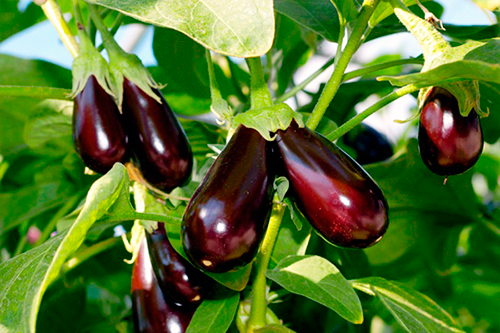
Giselle F1. Eggplant ripens in July. In a greenhouse, it can give a higher yield compared to an open field. But he is demanding in care (feeding, watering, soil care). The crop can be stored for a long time, as it does not deteriorate for a long time. They are planted on seedlings in mid-March - transplanting into open ground in late May and early June (05.25-10.06). Plant height up to 120 cm without thorns and cups.
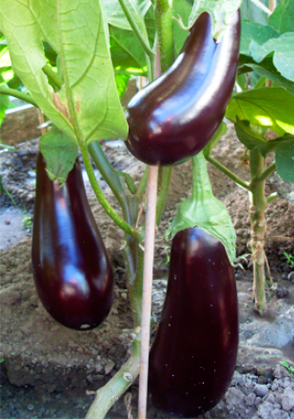
Robin the Hood. Unpretentious, well suited for beginner summer residents. Seeds are sown in March, planted in the ground and greenhouse at the end of May. In July - early August, you can harvest. Excellent taste. Belong to early ripening varieties
Albatross. A mid-season variety that has proven itself well for the middle lane and the Moscow region and one of the best. It also grows well in greenhouses. It has a pear-shaped and dark purple color, the flesh is greenish without bitterness and is tasty. Another advantage of the variety is its resistance to eggplant diseases (cucumber and tobacco mosaic). Good care is needed, including feeding and watering.
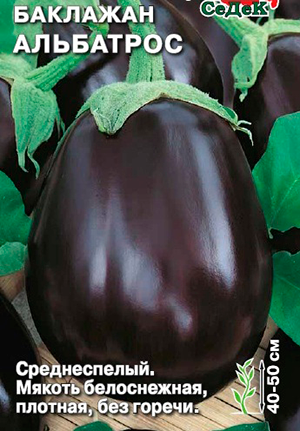
The taste of mushrooms. Has an unusual white color. It tastes like mushrooms, without bitterness. Easy to grow. Timely care is required (watering with warm water, feeding and loosening the soil).
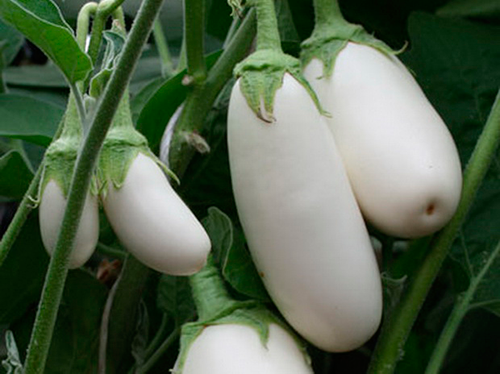
King of the north. Resistant to cold, which is possible in the summer in the suburbs. Delicious variety. The best variety for planting in the northern regions.

Eggplant varieties for greenhouses
Since eggplant loves warmth and care is more grown in the Moscow region in a greenhouse. As for the varieties, these are the best listed above: Giselle F1, Robin Hood, Albatross, and also:
Bagheera F1. Seeds are sown in mid-March when grown in a greenhouse. The ripe fruit has a greenish flesh, and does not taste bitter.
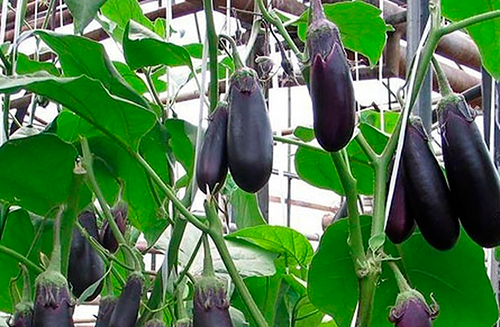
Northern blues. Early ripening variety. Baklkjan pulp is greenish and tasty. The height of the bush is up to 170 cm. It can also be grown in the northern regions of Russia and Siberia. Seeds are sown in late February - early March. They are transplanted into the greenhouse in May.

Donetsk is fruitful. Has an excellent taste. An early ripe eggplant variety. Pulp without bitterness. The bush is low - up to 45-47 cm. It has a good yield. The advantages also include a weak susceptibility to wilting.
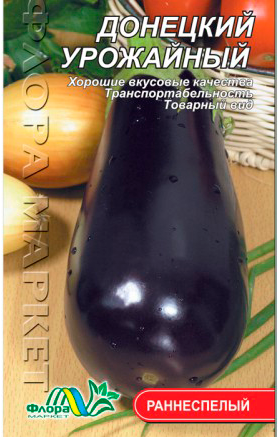
Baikal F1. Unpretentious care. Tall - up to 120 cm in height.
Alyonka - a productive variety with an unusual green skin. Seeds are sown in February-March. More suitable for greenhouse cultivation. If planted outdoors, the fruit will be smaller.
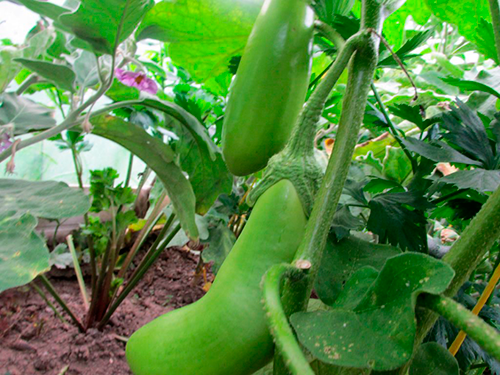
Now you know the peculiarities of planting eggplant seeds in the Moscow region and first of all you need to decide on the variety.
Rate the article:
Rating: 0/5 - 0 votes
Everyone knows that eggplant is a whimsical agriculture, and you need to try a lot to collect a generous harvest at the end of the summer. In addition, given the climatic features of central Russia, it is better to sow eggplant seeds not in open ground. It will be more efficient to grow this plant in greenhouses. There are also desperate farmers who are ready to provide all the necessary conditions for the active growth of eggplants in the garden.
Growing methods
Before figuring out which of the varieties of vegetables are considered the most suitable for growing them in the Moscow region, it is necessary to study in more detail which method should be preferred. The Moscow region is not the most favorable region for planting eggplant seedlings in open ground. This area is characterized by frosts, sometimes even in summer, and this is already a guaranteed death for plants. In addition, the temperature regime here constantly fluctuates, which also creates a stressful microclimate for eggplant. Therefore, experts recommend planting early-maturing varieties, however, as well as medium-ripening ones, in greenhouses. Here you can maintain a stable high temperature, control the humidity level, etc.
Planting eggplant is also possible in open ground, although this activity is quite risky. With such external factors as frost, temperature fluctuations, you have to somehow cope if you want your seedlings to bring a good harvest over time. In any case, it is recommended to give preference to early or medium varieties of eggplant, because late-ripening varieties will catch the first autumn frosts.
Video "The best varieties of eggplant"
From the video you will learn about the best varieties of this vegetable for a particular region.
Variety selection
The best varieties of eggplant for the Moscow region are early and mid-season. Since you are going to plant them in the northern region, it is advisable to purchase seedlings of those varieties that will bear fruit in the middle of summer. In this case, you will reduce the risk of freezing of plants in the garden. These varieties have other important benefits as well. They are prolific, which cannot but please the farmer, and also have good frost resistance. In addition to everything, early and middle varieties of eggplant are also much less susceptible to various infections and diseases.
Among the popular varieties of eggplant for the Moscow region, universal varieties stand out. It is noteworthy that they can be grown not only in greenhouse conditions, but also in the open field.But in the second case, it is recommended to cover the seedlings with transparent film at least at night for the first time.
Giselle F1
Among the eggplants for the Moscow region, the best variety is distinguished - "Giselle". This hybrid is versatile, so it doesn't matter where you decide to grow it, in the greenhouse or in the garden. In fairness, it should be noted that if from 1 sq. m. in the garden you collect, say, 7-9 kg of vegetables, then in a greenhouse the yield will reach 14 kg. What else is this variety characterized by?
The plant produces large cylindrical dark purple fruits. But not only due to external features and high yield, this type of eggplant has become popular among domestic gardeners. It also has good taste and snow-white flesh. Interestingly, this vegetable is also versatile in the cooking process. It is served as a snack, as well as salted and canned. This variety will become indispensable in your kitchen.
Alenka
The first thing to pay attention to is the color of the skin. This variety differs from its counterparts in the presence of a light green peel. This will not affect the taste in any way, and this variety has already found admirers among domestic farmers. Even taking into account the complexity of growing eggplant in the Moscow region, this variety takes root well even in the open field. Eggplant "Alenka" is a type of early ripening. By sowing seeds in February-March, you will harvest your first crop soon enough.
In cooking, this variety is widely used. You can prepare various dishes and snacks from it, and can also be canned for the winter. What are the advantages of this early ripening variety:
- the growing season for a plant lasts no more than 108 days. We can safely talk about the possibility of growing this crop not only in the Moscow region, but also much to the north;
- the fruits are attractive in appearance, and their light green pulp is very tasty;
- no thorns on the cups.
There are many potential areas for the active cultivation of these eggplants in Russia. Nevertheless, this agricultural culture still remains thermophilic and gives a generous harvest in greenhouse conditions.
Agate F1
Such a shrub is inferior in size to the previous varieties. This is probably why its yield is also not very high. Nevertheless, this type of eggplant will take root well in the garden in the Moscow region. Sow seeds directly into open ground, and this should be done no later than May. Freezing during this period is rare, so you don't have to worry about eggplant. Some farmers still take additional measures to protect the variety: for this, you can cover the seedlings with transparent film for a while or do it only at night.
From the bushes, you will collect cylindrical purple fruits, which, among other things, differ from their "congeners" also by the mildness of taste. Moreover, the color of their flesh is white, and there is no bitterness in the taste. As for the use of this kind of eggplant in cooking, dishes are prepared from it, and also served on the table in canned form.
Albatross
Among the eggplants for the Moscow region, a variety called "Albatross" also stands out.
This is a mid-ripening variety of eggplant, which will bring a generous harvest to the farmer (up to 9 kg of fruit can be harvested from 1 sq. M.). In addition to its main advantages, the variety is also distinguished by its resistance to the most dangerous plant diseases - cucumber and tobacco mosaics.
Nevertheless, some infections still carry a certain danger for this type of eggplant, so if you want to collect a really generous crop from your garden or greenhouse, you must ensure that the fruits and the shrub itself are fully protected from any external factors.The growing season for the variety lasts about 120 days, so it is recommended to sow seeds in mid-March.
Don Quixote
This variety is primarily suitable for greenhouse cultivation. At the same time, it does not matter what your greenhouse will be, heated or unheated. Eggplants of this kind are always recognizable: they are characterized by an oblong shape, unusually elongated and widened downwards.
This variety of vegetable is prized for its mild taste, as well as due to the small amount of seeds in the pulp. Farmers who grow these fruits will certainly be satisfied with their characteristics. In addition, they are also widely used in cooking: any dishes, pickles and preservation - you can freely experiment with this variety in the kitchen.
Sancho Panza
The main advantage of this variety is the ability to grow it far outside the Moscow region, in the northern regions of Russia, since this type of eggplant is highly frost-resistant. Open ground is the best option for this variety.
His yield is not bad: from 1 sq. m. you can collect up to 9 kg of fruit. An important advantage of the eggplant variety is also considered to be an amazing resistance to various diseases. And the plant will not require excessive care.
Romantic
Early maturity is a key characteristic of the variety. The growing season for these eggplants will last approximately 110 days. Fruits have a non-standard color, which is dominated by dark purple color. Their shape is oval. As for the use of the variety in cooking, there will be no problems with this: the vegetable is used for preservation and preparation of various dishes and snacks. Nevertheless, certain difficulties await you at the stage of growing shrubs.
This plant is whimsical, it is prone to various diseases. If you can create an optimal microclimate for such a variety of eggplant, the yield will eventually be 6-8 kg per 1 sq. m. In general, having determined which of the varieties are most suitable for growing in the Moscow region, you can start growing them on your site or in a greenhouse.
Video "Growing eggplant"
From the video you will learn how to properly grow this vegetable.
They learned to grow eggplants in the Urals and Siberia, so compared to the harsh Siberian conditions, the Moscow region is just paradise for them. Nine varieties are known that have shown good germination and high yields in temperate climates.
Eggplant is one of the most heat-loving crops. Previously, it was believed that growing this nightshade crop with a growing season of 100-120 days in a temperate climate and, in particular, in the Moscow region is unrealistic. However, breeders managed to adapt this thermophilic plant to the temperate climate near Moscow and lack of sun. Of course, for these conditions it is better to select early and mid-season varieties and grow them only in seedlings.
Agate F1
Quite productive variety with medium sized bushes. The planting density should not exceed 6 plants per 1 sq. M. The variety was repeatedly tested in the Moscow region and it was found that for full-fledged cultivation, sowing of seeds should be carried out no later than mid-May. At the same time, they can be sown directly into open ground, covering the plantings with film at night. Fruits are juicy purple in color, cylindrical in shape with pleasant pulp, which is absolutely not bitter. Therefore, you can cook Agate F1 eggplants without preliminary soaking in salt water. The variety is quite resistant to pests and diseases, the bushes need regular watering and feeding, but they do not tolerate autumn frosts well.
| Appointment | Productivity (kg / sq.m) | Fruit weight (g) | Maturation (days) | Pulp color |
| 5-7 | 230-260 | 100-110 | White | |
Alenka
A very distinctive and original variety. It is noteworthy, first of all, for the unusual color of the fruits - they are light green and rather look like large smooth-skinned cucumbers.Fruiting is abundant, even despite the unstable weather of the Moscow region. Sowing seeds is recommended to be carried out in February-March with the obligatory cultivation of seedlings in a greenhouse or greenhouse. Surprisingly, in the process of cooking or pickling, eggplants of this variety can be combined with fruits of other varieties. Alenka is practically not affected by pests (apparently, they are frightened off by the unusual appearance of the plant), and with proper agricultural technology, it will bring a stable harvest.
| Appointment | Productivity (kg / sq.m) | Fruit weight (g) | Maturation (days) | Pulp color |
| 6-8 | 300-330 | 105-110 | Greenish | |
Albatross
The popularity of this variety has brought its high yield. Although outwardly, the bush is not very impressive - it grows no higher than 70-80 cm. Depending on environmental conditions, eggplants of this variety can grow both in open ground and in a greenhouse. Sowing seeds is recommended in mid-March. The fruit is pear-shaped with a dark purple skin. The pulp is without bitterness, which is very convenient for culinary experiments. The cultivar is practically immune to two main diseases of eggplant: cucumber and tobacco mosaic. True, resistance to other diseases is low, so the plant needs to be constantly fed, watered and prevented.
| Appointment | Productivity (kg / sq.m) | Fruit weight (g) | Maturation (days) | Pulp color |
| 7-9 | 350-400 | 120-140 | Greenish | |
Bagheera F1
This hybrid variety can be called one of the most successful breeding products, as it turned out to be high-yielding and resistant to a number of diseases. Seeds are advised to be planted in mid-March, and the bushes are designed exclusively for greenhouse cultivation. Outwardly, the fruits look very attractive and retain their presentation for a long time. Their length reaches 20 cm. The pulp is very pleasant to the taste, practically without bitterness. The variety is resistant to most diseases and is less susceptible to pest attacks.
| Appointment | Productivity (kg / sq.m) | Fruit weight (g) | Maturation (days) | Pulp color |
| 6-8 | 250-350 | 100-110 | Light green | |
Don Quixote
You will definitely not confuse this eggplant with any other. Fruits are dark purple, elongated, saber-shaped, very large and significantly superior in weight to fruits of other varieties. There are few seeds in them, so the culinary properties of the "blue" ones exceed all expectations. Especially delicious dishes come from toasted slices or pieces of vegetables. The bushes are almost not affected by the spider mite. The variety is recommended for growing in winter, spring heated and unheated greenhouses.
| Appointment | Productivity (kg / sq.m) | Fruit weight (g) | Maturation (days) | Pulp color |
| 6-8 | 250-350 | 100-110 | Light green | |
Giselle F
This early variety has a high yield, even if the plants are planted outdoors. Sowing seeds is recommended in mid-March, and seedlings can be transplanted from May 25 to June 10. Bushes grow compact with a height of only about 120 cm. Fruits are round, cylindrical, very large and tasty. The skin is dark purple, almost black. There are no restrictions on cooking dishes from Giselle F1 eggplants. In addition to excellent taste, the fruits retain their fresh appearance for a long time and do not deteriorate. This variety is not very popular due to the fact that when growing, you need to strictly follow agricultural techniques, regularly feed the plants and loosen the ground around them. But if you follow these simple rules of care, Giselle F1 will surprise you with a generous harvest.
| Appointment | Productivity (kg / sq.m) | Fruit weight (g) | Maturation (days) | Pulp color |
| 10-15 | 300-500 | 110-120 | White with a gray tint | |
Robin the Hood
The variety is interesting for summer residents near Moscow, first of all, for its early maturity and versatility - vegetables can be grown both in the open field and under a film shelter. Seedlings planted in May will give their first fruits in July (for greenhouse cultivation) or August (in open ground). The bushes grow up to 1 m. Fruits are of medium size, soft purple color, without bitterness, they can be "salted and fermented".Robin Hood is not very resistant to disease, but it copes well with adverse weather conditions.
| Appointment | Productivity (kg / 1 sq.m) | Fruit weight (g) | Maturation (days) | Pulp color | |
|
6-8 |
250-300 |
90-110 |
Bright white | ||
Romantic
An early ripe variety with low bushes (from 70 to 100 cm), recommended for growing in small areas, in small households and farms under a film cover. Fruits are small, oval in shape, matte mauve color with excellent taste. These "romantic" eggplants are recommended to be eaten in any form: boiled, stewed, fried, can be used for conservation. The resistance of the variety to diseases is average, the plant does not tolerate temperature extremes.
| Appointment | Productivity (kg / sq.m) | Fruit weight (g) | Maturation (days) | Pulp color |
| 6-8 | 180-270 | 110-120 | White | |
Sancho Panza
This type of eggplant really does have a resemblance to a literary character. Although the bushes grow up to 150 cm in height, they have a rather spreading and compact rounded crown. But most of all, the fruits resemble Don Quixote's squire - in shape and size they resemble indigo tomatoes - round, black, with a slight purple tint. Housewives like to experiment with eggplants of this atypical type, especially since there are no restrictions in the culinary processing of fruits. The plant is very strong, resistant to most diseases and cold weather, which allows it to be grown far beyond the Urals, not to mention the Moscow region.
| Appointment | Productivity (kg / sq.m) | Fruit weight (g) | Maturation (days) | Pulp color |
| 7-9 | 600-800 | 120-130 | Yellowish white | |
In this review, we have listed the most popular eggplant varieties that grow well in the Moscow region. They have been cultivated for more than one year, and each time the plants give excellent yields. What varieties do you grow in similar conditions?
